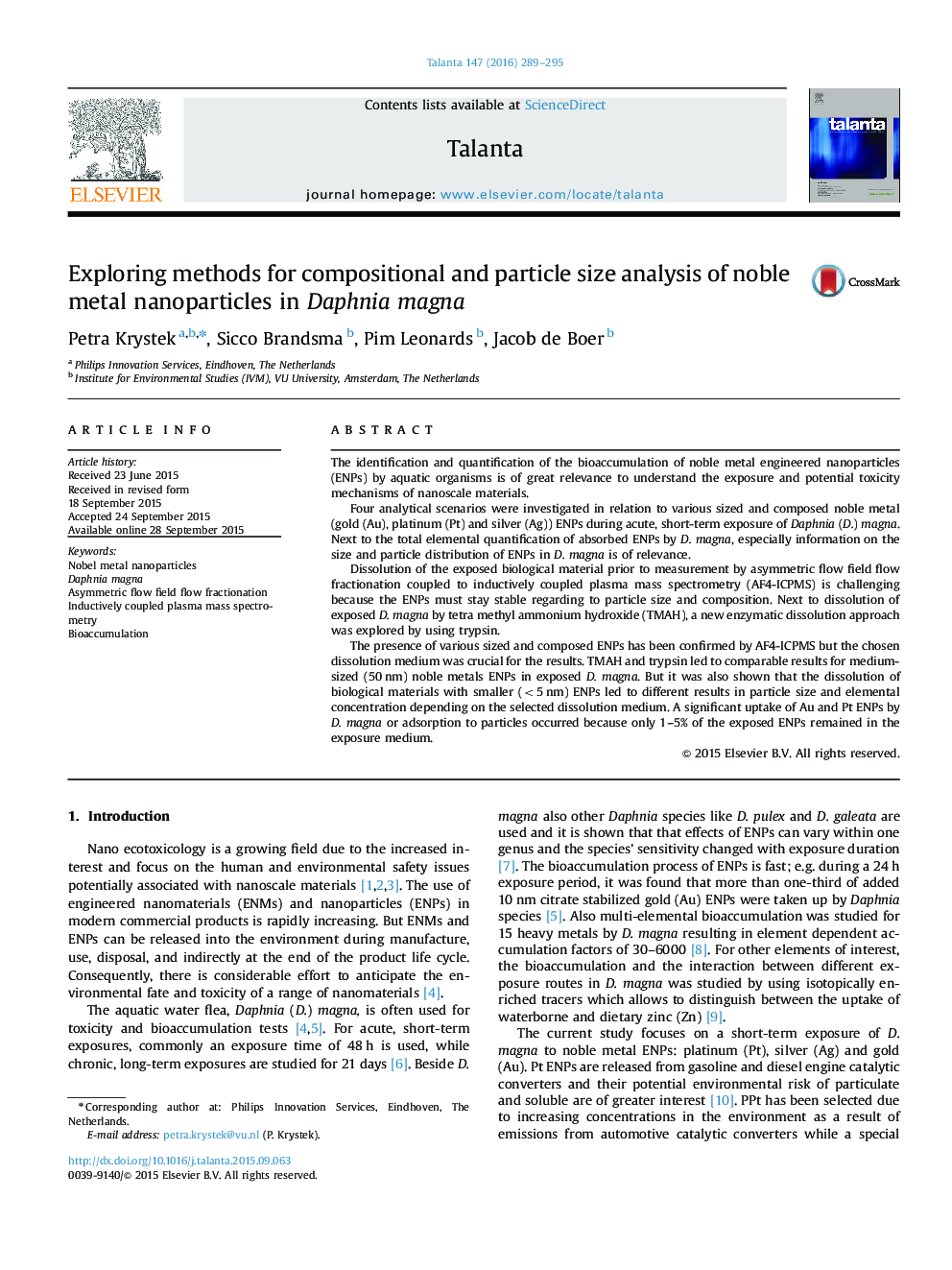| کد مقاله | کد نشریه | سال انتشار | مقاله انگلیسی | نسخه تمام متن |
|---|---|---|---|---|
| 1242757 | 1495788 | 2016 | 7 صفحه PDF | دانلود رایگان |

• The uptake of various sized and composed nanoparticles by Daphnia magna is studied.
• Effects of sample pretreatments on the abundance of nanoparticles are identified.
• AF4-ICPMS methods are improved.
• New insights into the behavior of nanoparticles in Daphnia magna were found.
The identification and quantification of the bioaccumulation of noble metal engineered nanoparticles (ENPs) by aquatic organisms is of great relevance to understand the exposure and potential toxicity mechanisms of nanoscale materials.Four analytical scenarios were investigated in relation to various sized and composed noble metal (gold (Au), platinum (Pt) and silver (Ag)) ENPs during acute, short-term exposure of Daphnia (D.) magna. Next to the total elemental quantification of absorbed ENPs by D. magna, especially information on the size and particle distribution of ENPs in D. magna is of relevance.Dissolution of the exposed biological material prior to measurement by asymmetric flow field flow fractionation coupled to inductively coupled plasma mass spectrometry (AF4-ICPMS) is challenging because the ENPs must stay stable regarding to particle size and composition. Next to dissolution of exposed D. magna by tetra methyl ammonium hydroxide (TMAH), a new enzymatic dissolution approach was explored by using trypsin.The presence of various sized and composed ENPs has been confirmed by AF4-ICPMS but the chosen dissolution medium was crucial for the results. TMAH and trypsin led to comparable results for medium-sized (50 nm) noble metals ENPs in exposed D. magna. But it was also shown that the dissolution of biological materials with smaller (<5 nm) ENPs led to different results in particle size and elemental concentration depending on the selected dissolution medium. A significant uptake of Au and Pt ENPs by D. magna or adsorption to particles occurred because only 1–5% of the exposed ENPs remained in the exposure medium.
Figure optionsDownload as PowerPoint slide
Journal: Talanta - Volume 147, 15 January 2016, Pages 289–295